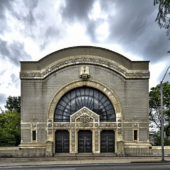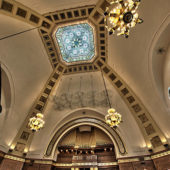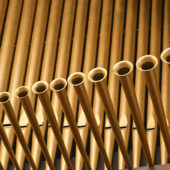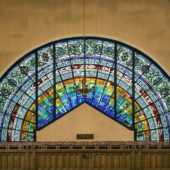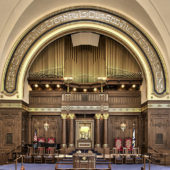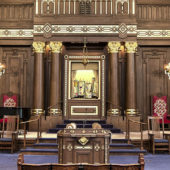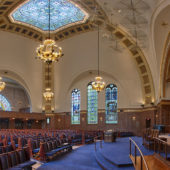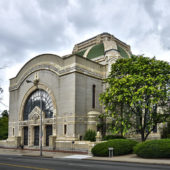A remarkable Beaux Arts style building reminiscent of the Belle Epoque.
Due to changing immigration patterns and the growth of Pittsburgh, a new, larger temple was dedicated in 1901. However, by 1904 the congregation had already outgrown the space. An architectural competition was held to select a designer for the new synagogue building. Henry Hornbostel – the architect Andrew Carnegie selected to create Carnegie Institute of Technology (now Carnegie-Mellon University) – emerged the winner. Hornbostel’s Beaux Arts style merged the traditional with the modern resembling the architecture of the 1900 Paris Exposition. The design incorporated four representational stained glass windows by William Willet. Subsequently the congregation installed a 1907 Kimball organ, the largest of its kind still in use. The Temple sanctuary holds more than 900 people on the first floor and 300 in the gallery. The building was finished in time for High Holy Day services in 1907.
During the 20th century Rodef Shalom’s growth continued, reaching a peak membership of approximately 2300 families in the early 1960s. In 1989-1990 a major capital campaign restored the sanctuary. In 2000-2003, other areas of the building were updated for contemporary usage and handicap accessibility and a new porte-cochere entrance from the parking lot was added. As we forge ahead in the 21st century,

